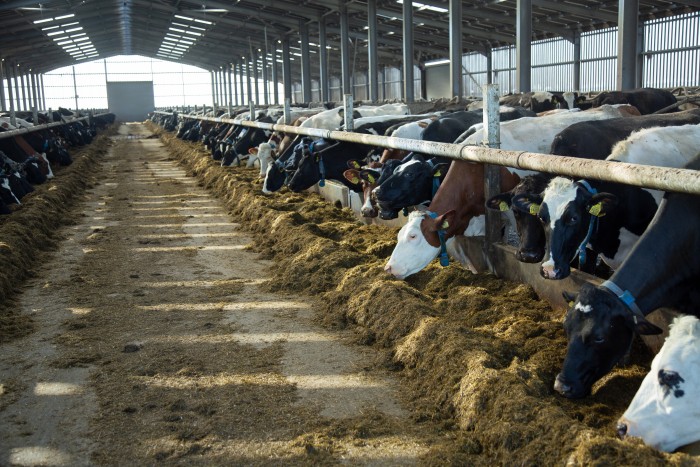As producers get further into maize and grass silage clamps, paying close attention to forage quality is essential to ensure the nutritional requirements of dairy herds are met, says Dr Richard Kirkland, Global Technical Manager for Volac Wilmar Feed Ingredients.
“Balancing a winter ration should begin with silage analysis to fully understand the quality of the basal forage to enable appropriate supplementation for key macro nutrients including fibre and protein, and to meet requirements for total metabolisable energy (ME),” explains Dr Kirkland.
While initial silage quality samples should have been collected once fermentation has been completed six weeks after harvest, monthly quality tests should be taken once feeding begins, adds Peter Smith, silage expert for Volac.
“Ideally, producers will also sample silage for dry matter (DM) content each week to ensure accurate ration formulation,” advises Mr Smith. “However, if that isn’t always practical, it is essential to conduct DM tests at least every fortnight, especially in periods of wet weather.”
With an increasing trend in the dairy industry to adopt multi-cut silage systems, further attention to detail is needed to balance these high-energy, low-fibre forages.
According to Dr Kirkland, these short-regrowth pasture silages are more rapidly fermentable in the rumen and can pass through the digestive system more quickly. With inappropriate supplementation, particularly with high-starch cereals, the lower fibre levels can compromise rumen pH and lead to an increased risk of acidosis and milk fat depression.
“While high fibre ingredients such as straw are an effective buffer to slow down flow of feed through the digestive system, they also fill the rumen with low feed quality bulk that can compromise energy intake and milk protein,” advises Dr Kirkland. “Avoid overloading the diet with high starch supplements like cereals to make up for the energy deficit because it will lead to the accumulation of acid in the rumen, further increasing the risk of acidosis. Instead, choose a rumen-protected fat supplement like Megalac that will improve rumen conditions while providing a dense energy source.”
Optimising fat and fatty acids
The typical dairy cow needs 15 to 20% of her ME to come from fat, which could be equivalent to over 6% of ration DM for high yielding cows.
“It is important to note that fat supplements are more than just a dense energy source – individual fatty acids impact cow performance by partitioning nutrients to different aspects of performance,” explains Dr Kirkland. “Therefore, fat supplements should be selected based on the fatty acid make-up and depending on the stage of lactation, individual farm challenges and requirements to maximise returns from specific milk contracts.”
For autumn calving cows in early lactation, the challenge is to improve body condition score and to get back in calf. As a general rule, each one-unit loss in condition will reduce conception rates by 10%. During this early lactation period, C18:1 (oleic acid) is the key fatty acid to deliver to the small intestine for absorption as the latest research demonstrates its effect on insulin status, increasing partitioning of energy and nutrients to improve body condition.
“C18:1 also directly influences development of fertilised eggs and improves digestibility of total diet fat to provide an additional energy boost,” adds Dr Kirkland. “To deliver C18:1 to the small intestine for increased digestion and absorption, it must be provided in rumen-protected form. Ongoing research at the National University of Singapore indicates that this is more achievable with large granule-sized calcium salt supplements like Liverpool-manufactured Megalac.”
For cows in the post-peak period of lactation, supplementing with products containing high levels of C16:0 (palmitic acid) will increase partitioning of nutrients to milk, which in turn will improve milk and milk fat production.
While targeting these specific fatty acid requirements is not feasible in a year-round calving system, a multi-purpose fat supplement like Mega-Max with an optimum ratio of around 60% C16:0 and 30% C18:1 is the most effective way to meet nutritional needs of the entire herd at different stages of lactation.
“By understanding the quality of silage and the impact specific fatty acids have on particular areas of performance based on stage of lactation, winter rations can be balanced to optimise cow performance to maximise production for the entire herd,” concludes Dr Kirkland.


